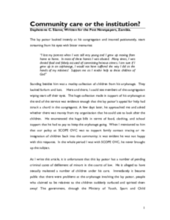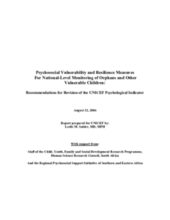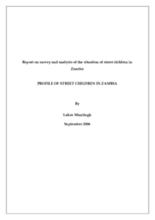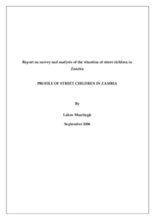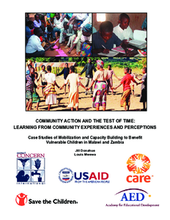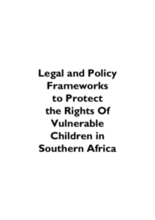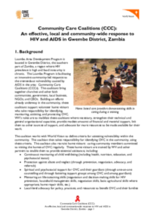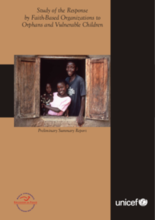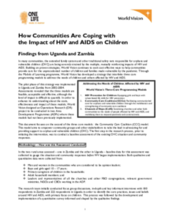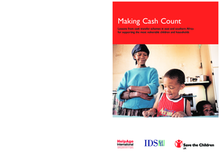childrens_living_arrangement
children_living_without_bio
Displaying 131 - 140 of 150
Brief article observing the proliferation of orphanages in Zambia. Points to several models of community-based care as alternatives better able to address the rights and needs of children.
This document discusses the work contributing to the area of psychosocial measurement with regard to HIV/AIDS and provides samples of surveys that can be used in measurement.
Profile of street children in Zambia. Emphasis on generating data for policy development. Collected data analyzed at a national level but datasets are available for further analysis in terms of geographical location, gender, or other population sub-sets.
Profiles street children in Zambia. Outlines good practices and priorities for use in the development, coordination, and implementation of a national strategy.
Research on the effectiveness and sustainability of established initiatives for vulnerable children in Zambia and Malawi. Outlines implications for approaches to community mobilization in current programming efforts.
Reviews legal and policy frameworks for the protection of OVC rights in 10 Southern African countries. Includes key concerns and recommendations. Appendix includes country-specific details of National Policies on Orphans and Vulnerable Children and National Plans of Action.
Short document outlining the constitution, role, and work of community care coalitions in Gwembe District, Zambia. Includes lessons learned and recommendations.
A study that looks at the response of faith-based organizations in Kenya, Malawi, Mozambique, Namibia, Swaziland, and Uganda. The report contains statistical information, and details positive care practices to build on, and negative examples to avoid.
Assessment of pilot programs employing World Vision Community Care Coalition model in Uganda and Zambia.
This paper is a comprehensive examination of cash transfers in Africa and their impact on children. Case studies from Ethiopia, Zambia, Mozambique and Lesotho are discussed.

